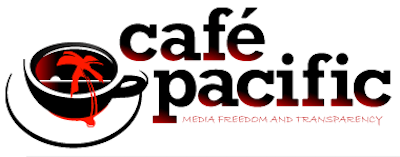REVIEW: By Damon Salesa
This ocean of ours is many things, but it is rarely “pacific”. The passage of contact, colonialism and supposed independence has not been without extreme moments.
The problems of living on the margins of a global society which both ignores and exploits the “sea of islands” are multiple, and as complex as the ocean itself. It is within such a precarious context that this feisty book examines the mass media in the Pacific.
Nius Bilong Pasifik is as urgent as it is unpretentious. Written entirely by people involved in Pasific mass media, it draws on the authors’ experiences and provides lucid illustration. It is gutsy but unassuming.
The task of the Pacific media, if it was not already clear, is onerous and treacherous. Foreign ownership, the swamping by foreign media, the constraints and trust of your own and others’ cultures, inhibited freedom if not outright danger, and the conundrum of “development” are just a few of the problems facing the Pacific media, and which they have to deal with in a language not their own, and often with inferior technology.
The Bougainville crisis, television, libraries, and the pro-democracy movement in Tonga are just a few of the issues to which Nius turns itself. While focusing largely on the Western Pacific, particularly Papua New Guinea, there are broader ramifications for throughout the Pacific, and even beyond.
Tackling the subject through themes affecting the whole region, such as types of media, and then though a series of case studies, involves too much overlapping, but more than enough of fascination.
The naivety in some places (“environmental journalists . . . are not made — they are born . . .”) is compensated for by the sophistication, knowledge and insight that is more general.
There are a few notable omissions, one being the situation in Kanaka Maoli (in Hawai’i) and the Māori people of our own country; people overwhelmed by media, and subject to much degradation, negativity and marginalisation because of this. Omissions and other “hiccups” indicate a need for further work, rather than any irretrievable problems.
Nius is a place to start, not to finish. The Pacific and its media still await an Indigenous counterpart with the weight of a Noam Chomsky or Marshall McLuhan, but David Robie and his fellows make this arrival imminent.
- Nius Bilong Pasifik: Mass Media in the Pacific, edited by David Robie. Foreword by ‘I. Futa Helu. Port Moresby: University of Papua New Guinea Press. 1995. ISBN 9980840528. Reviewer Dr Damon Salesa is an Auckland author and academic.

